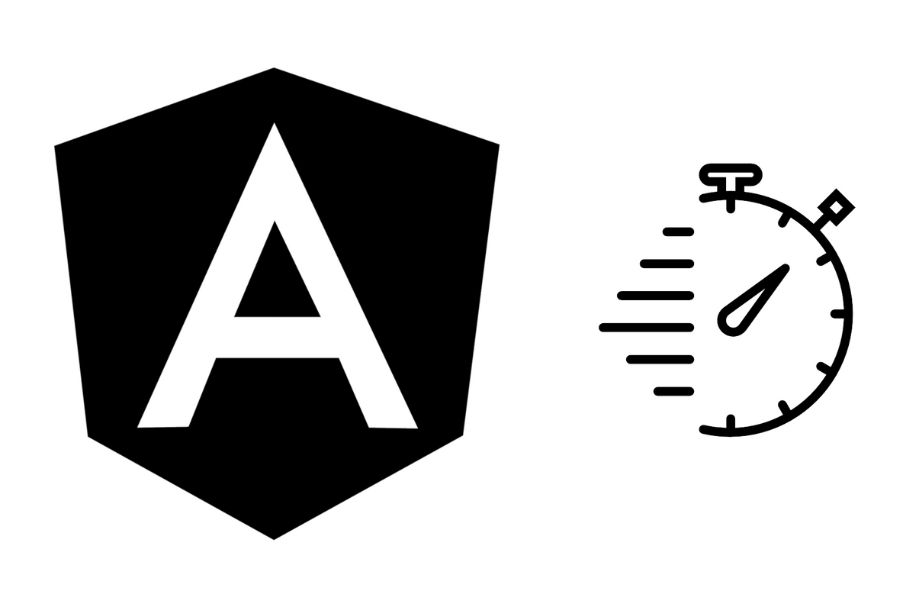In the fast-paced world of software development, code quality and security are essential for the success of your organization’s projects. Continually measuring code quality is crucial to achieving optimal performance and minimizing potential errors. However, maintaining coding standards can be daunting for developers, especially when using a CI/CD pipeline to update the code base.
If you want to improve your software development team’s code quality, the SonarQube platform is an excellent solution. It gives developers full code visibility through static code analysis, allowing them to uphold coding standards and deliver top-notch code. At Sipod, we use SonarQube and other tools to improve code quality and development efficiency. You can read more about the tools we love in the blog section of our website.
In this post, we’ll dive deeper into SonarQube, explore its top features, and explain why businesses should consider using it for their code analysis needs.
What is SonarQube?
SonarQube is the ultimate solution for developers looking to create clean and efficient code. With its self-managed and automatic code review tool, SonarQube systematically detects issues in your code. It makes it easier to perform continuous code inspections of your projects.
SonarQube is a core element of Sonar Solutions. It integrates seamlessly into your existing workflow, saving you valuable time and resources. This tool analyzes over 30 programming languages, ensuring your code meets the highest quality standards. It provides clear remediation guidance to help you deliver high-quality code. SonarQube eliminates the days of manual code reviews and human errors that come with them.
By integrating seamlessly into your CI pipeline and DevOps platform, SonarQube ensures that your code is reviewed continuously. Thus, it enables you to focus on creating innovative solutions. With its powerful capabilities for measuring code quality, this tool provides an invaluable asset to developers looking to create exceptional software solutions.
SonarQube origin and history
In 2006, Freddy Mallet recognized the importance of code quality management and the need for an automated product that provides code reviews. The Sonar platform was born in 2007, with Simon Brandhof developing the platform by integrating best-of-breed open-source tools for Java. The founders of SonarQube had the vision to provide every developer with the ability to measure the code quality of their projects. Enthused by the platform’s vision, Olivier Gaudin joined the team in September 2007.
The three combined their passion to accelerate the development of the open-source Sonar platform, which was later renamed SonarQube. In 2008, SonarSource was born with an initial effort to make the platform enterprise-ready. In 2009, SonarSource developed its first commercial plugin, “Views,” for project portfolio management. The Sonar platform was accepted by the community and enterprise in 2010, with over 2K monthly downloads. SonarSource expanded the scope of its languages and analyzers to cover well-known standards in 2015.
In 2016, SonarSource raised $45 million in investment to accelerate growth further. The first SaaS platform, SonarCloud, was launched based on market needs and user demands in 2018. In 2019, SonarSource entered the SAST market and launched its Static Application Security Testing (SAST) capabilities and a new user experience. In 2020, RIPS Technologies became part of the SonarSource family, and in 2022, Sonar raised $412 million from new and existing investors. Today, SonarQube is trusted by more than 400,000 organizations and 21,000 enterprise customers globally and is considered integral to delivering better software.
What are the benefits of SonarQube?
Using the SonarQube database for code quality offers several advantages to your organization. Below are some of the key benefits:
- Improve Quality – The SonarQube database helps improve the quality of your application’s code, which in turn improves the overall quality of the application. This leads to increased revenue from conversions, higher brand awareness, and better user retention and engagement levels. Additionally, it reduces technical debt and prevents financial resources from being wasted on fixing issues that should have been addressed during the development and testing phases.
- Grow Developer Skills – SonarQube actively improves developer skills by providing regular code feedback. This enables developers to learn from their mistakes and write better code in future situations. The platform also helps developers understand why a particular issue is a problem and how to avoid it in the future.
- Continuous Quality Management – SonarQube makes quality control a part of every phase of the development process, thereby increasing maintainability and reducing costs associated with technical debt.
- Reduce Risk – By scanning code as it is written, SonarQube helps organizations reduce their digital risk and prevent security breaches caused by low-quality code with bugs and vulnerabilities.
- Scale With Ease – SonarQube was built to scale and can handle any number of projects with millions of lines of code.
- Increase Productivity – SonarQube reduces the scale, cost, and risk of maintaining applications, allowing developers to spend more time writing code.
What are SonarQube features?
SonarQube offers several indispensable features that developers can leverage to produce professional, high-quality, and error-free code.
#1 Static code analysis for over 30 languages
Static code analysis is a powerful technique that allows developers to inspect source code without running it, enabling them to identify defects, vulnerabilities, and other issues. With SonarQube, developers have access to a highly effective tool that can detect a wide range of issues in code, from standards violations and potential vulnerabilities to performance problems.
One of the key benefits of using SonarQube is its ability to identify problems that may not be immediately apparent when running the code. Such problems are security issues or coding practices that could lead to future maintenance problems. Using this tool, developers can ensure that every program they produce is high quality and meets the desired standards.
SonarQube also offers comprehensive language support, covering over 30 programming languages, including popular ones like Java, C#, and Python. This makes it a versatile and indispensable tool that can be used across all the languages developers work with.
#2 Code Security with SonarQube’s Security Hotspot Review Capability
One of the critical features of SonarQube is its capability to review security hotspots and detect potential vulnerabilities in your code. By leveraging a set of built-in rules and algorithms, SonarQube can analyze your code. It can also identify patterns and practices that may indicate potential vulnerabilities and help you address them.
SonarQube’s rules are based on industry standards. They are aimed at detecting and remedying security vulnerabilities commonly found in software, such as SQL injection, cross-site scripting (XSS), and insecure random numbers. In the event that SonarQube detects a possible security vulnerability in your code, it issues an error or warning message. This message enables you to examine the code and promptly address any issues.
By utilizing the security hotspot review feature offered by SonarQube, you can enhance the security of your code. You can also minimize the likelihood of security breaches and other associated vulnerabilities. This valuable feature can help ensure your code is robust, secure, and error-free.
#3 SonarQube’s Technical Debt Tracking and Code Smell Detection
With SonarQube, you can easily track code smells and fix the technical debt, thanks to its comprehensive set of features. Code smells often indicate potential problems. Fixing them can help improve the overall quality of your code.
This feature is handy when working with code obtained from sample code websites, as it allows you to make the code adaptable to your application. Ensuring that you track and resolve technical debt will result in code that is more maintainable and comprehensible, thereby increasing its accessibility to other developers.
Furthermore, SonarQube produces comprehensive code reports that offer valuable information on the quality of a project’s code. The reports contain details about code coverage, complexity, and duplication. They give you the necessary data to make informed decisions on enhancing your code. With SonarQube’s code analysis and reporting capabilities, you can take proactive steps to reduce technical debt, enhance the quality of code, and maintain the long-term sustainability of your project.
#4 SonarQube’s Metrics, History, and CI/CD Integration
SonarQube offers robust features for tracking code quality metrics, history, and integration with CI/CD pipelines. By utilizing this functionality, you can conveniently track the evolution of your code’s quality and guarantee it complies with the desired benchmarks.
SonarQube utilizes pre-configured rules and algorithms to evaluate the quality of your code and generate metrics, providing crucial insights into its quality. These metrics include key information about code coverage, complexity, duplication, and other factors that can significantly affect the overall quality of your program.
SonarQube produces these metrics in real time while analyzing the code and delivers comprehensive reports and charts. You can leverage these reports and charts to pinpoint areas of the code that need improvement and track code quality progress over time.
By utilizing SonarQube, you can keep a watchful eye on the quality of your code. You can take action to improve it as necessary, all while copying the best coding practices into your notes. Additionally, SonarQube lets you create custom rules for your codebase to enforce coding standards and best practices within your organization.
#5 SonarQube’s Extensibility and Community Plugins
SonarQube’s integration with code repositories such as GitHub, GitLab, and BitBucket enables you to track and improve your code quality in real time as you commit your code. Moreover, with over 50 community plugins, SonarQube provides a diverse range of tools that expand its capabilities and allow you to customize it to meet your unique needs.
These plugins offer integration with other tools and support for additional programming languages. With SonarQube’s extensive language support, custom rules, integration with code repositories, and detailed code reports, this tool is essential for any developer who wants to improve the quality of their code.
By leveraging SonarQube’s extensibility and community plugins, you can streamline your workflow, optimize your code, and reduce technical debt. All this will result in better-performing, more reliable applications.
In summary
Businesses should consider using SonarQube to ensure the quality of their software code. Code analysis tools can help software development companies to detect coding errors, security vulnerabilities, and performance issues early in the development process. SonarQube allows developers to address these issues before they become more complex and costly to fix. Additionally, code analysis tools can assist businesses in enforcing coding standards and best practices across their development teams. This will ensure consistency and improve overall code quality. By adopting code analysis tools, companies can enhance the quality of their software, reduce development costs, and deliver more reliable and secure products to their customers.
Tags:





